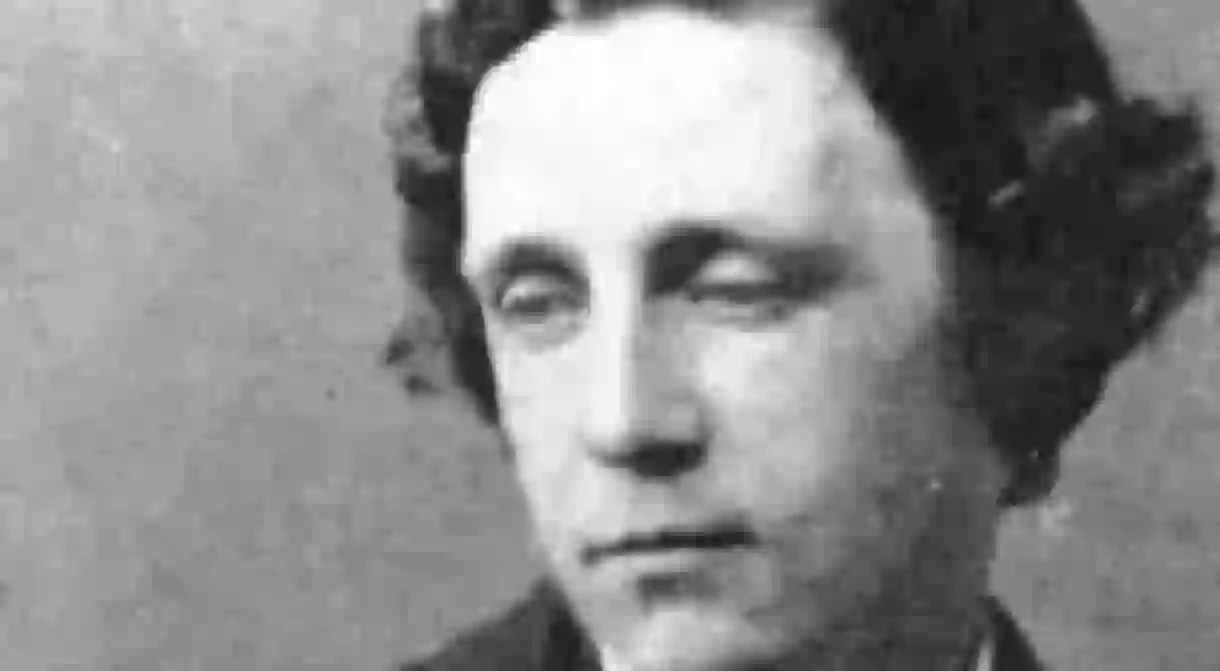Lewis Carroll’s 6 Most Underrated Works

Born in 1832, English writer and mathematician Charles Lutwidge Dodgson is better known by his pen name, Lewis Carroll, and is the author of the classic children’s novel, Alice’s Adventures in Wonderland. Here, we take a look at Carroll’s lesser-known or often overshadowed works, from his epic nonsense poem, “The Hunting of the Snark,” to his 1875 anti-vivisection essay.

Through the Looking-Glass, and What Alice Found There
It might seem strange to classify what is perhaps Carroll’s second-best-known work as ‘underrated,’ but it seems that Through the Looking-Glass, and What Alice Found There – as the follow-up to Alice’s Adventures in Wonderland – may have suffered the ‘curse of the sequel,’ at least when it was first published. Though nowadays it is considered as much a classic as its predecessor, Elizabeth A. Cripps – in an 1983 article assessing reviews of Carroll’s work – states, ‘Possibly the expectations raised by Alice’s Adventures were so high that no sequel could hope to meet them adequately.’
Through the Looking-Glass takes place six months after the original and follows Alice as she travels through her mirror into a strange world populated by surreal characters. While it is easy to see why, in its plot line similarities, the book is often dismissed as too imitative of its predecessor, it is said to have a more sombre, modernist tone and introduces readers to some of Carroll’s most beloved poems, including ‘Jabberwocky’ and ‘The Walrus and the Carpenter.’

The Hunting of the Snark
The Hunting of the Snark – also up there with Carroll’s better known publications – is another work often overshadowed by his magnum opus – at least by the casual Carroll fan. Published in 1876, this epic nonsense poem is Carroll’s longest poetic piece, a phantasmagorical tale of a ship full of misfits on a voyage to catch a mysterious creature – the Snark of the title.
While many analyses have attempted to make sense of The Hunting of the Snark‘s enigmatic prose – American author and scholar Morton N. Cohen notes, in his 1995 biography of Carroll, various interpretations, including the poem as existential drama or a parody of the Victorian cause célèbre, the curious Tichborne case – perhaps the poem’s true joy lies in it linking with Carroll’s other works. Those who have read Through the Looking-Glass may notice a few of his creatures and invented words – the ‘frumious Bandersnatch’ included – amidst the pages of The Hunting of the Snark.
A Tangled Tale
Carroll’s skills as a mathematician – he spent several years studying and teaching the subject at the University of Oxford’s Christ Church college – is often overlooked; A Tangled Tale is testament to both his talent for storytelling and Mathematics. First published as a series in the Monthly Packet (a magazine aimed at girls) between 1880 and 1885, A Tangled Tale takes the form of ten short, amusing stories – or ‘knots,’ as Carroll referred to them – within which mathematical problems are presented.
Described by Carroll as ‘for the amusement, and possible edification, of the readers of that fair magazine,’ it would seem the writer was later dissatisfied with his efforts, stating at the end of the series that A Tangled Tale was ‘but a lame attempt.’ His nephew, Stuart Dodgson Collingwood, however, thought differently, stating in his biography The Life and Letters of Lewis Carroll (published just a few months after the writer’s death in 1898) that ‘it is certainly the most successful attempt he ever made to combine mathematics and humour.’
Sylvie and Bruno
With Sylvie and Bruno (1889) – followed-up four years later with Sylvie and Bruno Concluded – Carroll sought to write a novel completely different from the Alice series, stating in the book’s preface that he sought to ‘strike out yet another new path: be it good or bad.’ Sadly, Carroll’s efforts to break out from his best known work went under-appreciated, and the book received negative reviews and sold just 13,000 copies; thankfully, more contemporary critiques of Sylvie and Bruno call for a re-evaluation of the novel.
Following its eponymous characters, siblings Sylvie and Bruno, the novel combines two plots – one set in ‘Fairyland,’ a familiar, Carroll-esque world full of his trademark nonsensical elements, and one set in Victorian Britain that takes the form of a social novel in which the characters explore themes of society, morality and religion. Unfamiliar territory, perhaps, but as Sylvie and Bruno and its conclusion are the last novels published within Carroll’s lifetime, the novel makes for an interesting read.

Some Popular Fallacies about Vivisection
So far, we have covered Carroll’s talents as both writer and mathematician, but not many know that the man behind Alice’s Adventures in Wonderland was also a voice in Victorian Britain’s anti-vivisection movement.
Published in the Fortnightly Review in 1875, Carroll’s ‘Some Popular Fallacies about Vivisection‘ draws comparisons between animal testing and field sports, argues against the misconception that mankind’s dominion over animals justifies the infliction of suffering and argues that such attitudes could easily see the practice of vivisection extended to human subjects.
An illuminating insight into Victorian practices of animal testing and attitudes towards it – the writer’s own disapproving reaction included –, ‘Some Popular Fallacies about Vivisection’ concludes that ‘the principle of selfishness lies at the root of this accursed practice.’
Euclid and his Modern Rivals
Published in 1879 under his birth name, Charles Lutwidge Dodgson, Euclid and his Modern Rivals is a part-academic, part-literary work arguing for the importance of the seminal Greek mathematician’s teachings of geometry.
While its subject matter may be daunting, its form and tone – set out like a dramatic play and purposefully imbued with humour and light-heartedness – makes Euclid and his Modern Rivals an approachable book for the less mathematically minded. Indeed, as Carroll stated in the book’s preface, he did this precisely ‘to make it a little less tedious and a little more acceptable to unscientific readers.’
By Helen Armitage













